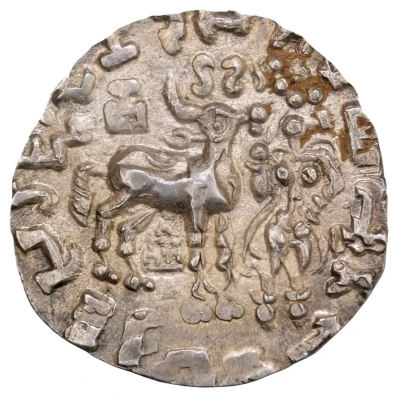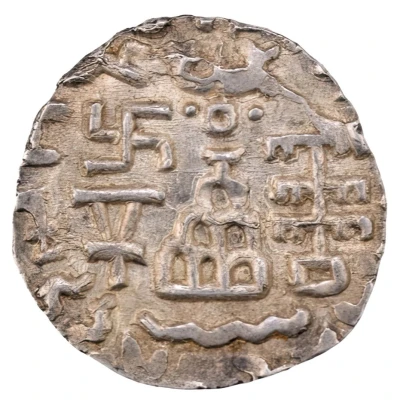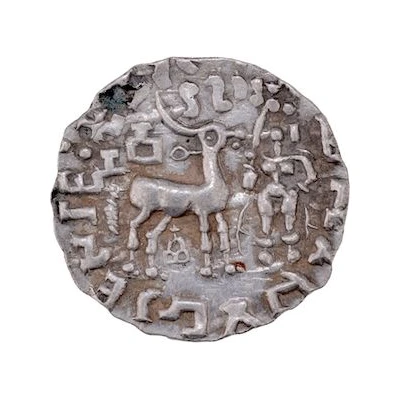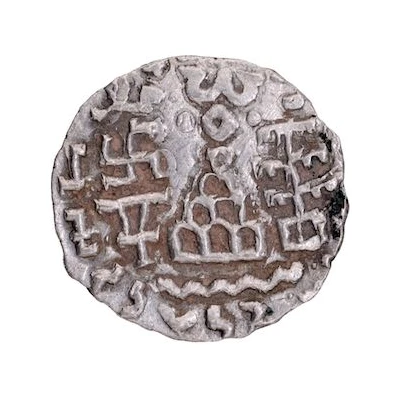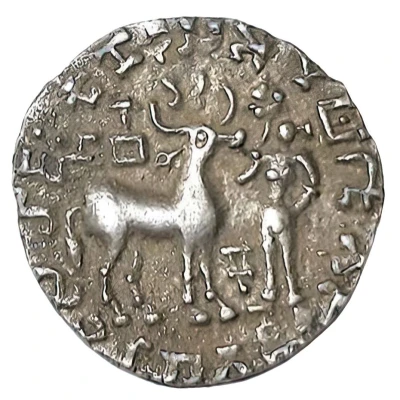
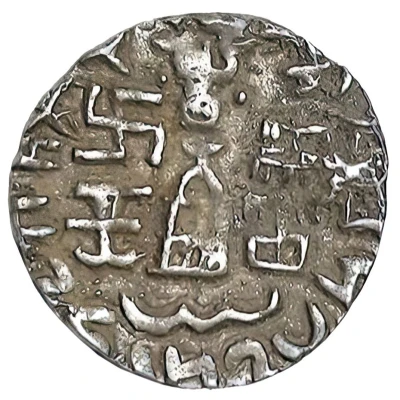

© Amit Kher (CC BY-NC)
1 Drachm - Amoghabhuti 200 BC - 100 BC
| Silver | 2.07 g | 18.51 mm |
| Issuer | Kuninda Kingdom (Western Himalayas) |
|---|---|
| Type | Standard circulation coin |
| Years | 200 BC - 100 BC |
| Value | Drachm (1) |
| Currency | Drachm (200 BC to 100 BC) |
| Composition | Silver |
| Weight | 2.07 g |
| Diameter | 18.51 mm |
| Thickness | 1.57 mm |
| Shape | Round (irregular) |
| Technique | Hammered |
| Demonetized | Yes |
| Updated | 2024-10-10 |
| Numista | N#418135 |
|---|---|
| Rarity index | 97% |
Reverse
A centrally placed six-arched hill (chaitya) with parasol, a wavy river line below and a Nandipada (Triratna) above, Swastika above a (split) Indradhvaja on the left field and a tree within railings on the right, the Kharoshthi legend around the field
Lettering: "(Rana Kunindasa Amoghbu)tisa Maharajasa" (Great king Amogh, of the Kunindas)
Edge
Plain
Comment
Pieper 1235 - Indradhvaja between the deity and deer
Variant also mentioned in ACC #11 - https://www.ancientcoins.ca/kuninda/kuninda.htm
Interesting fact
One interesting fact about the 1 Drachm - Amoghabhuti coin from the Kuninda Kingdom is that it features a unique blend of Greek and Indian architectural styles on its reverse side. The coin's design showcases a fusion of Hellenistic and Indian influences, reflecting the cultural exchange and syncretism that occurred during the period of Greek rule in the region. This blending of styles is evident in the coin's depiction of a Greek-style temple facade, topped with a distinctly Indian-style tower, or "shikhara." This architectural motif is a distinctive feature of the coin and highlights the cultural richness and diversity of the region during that time.

